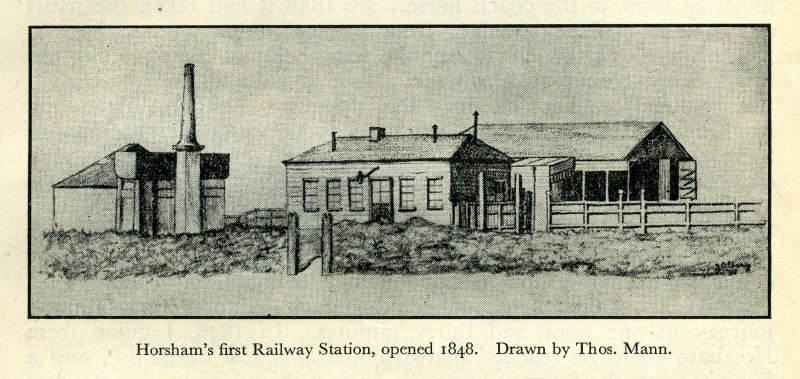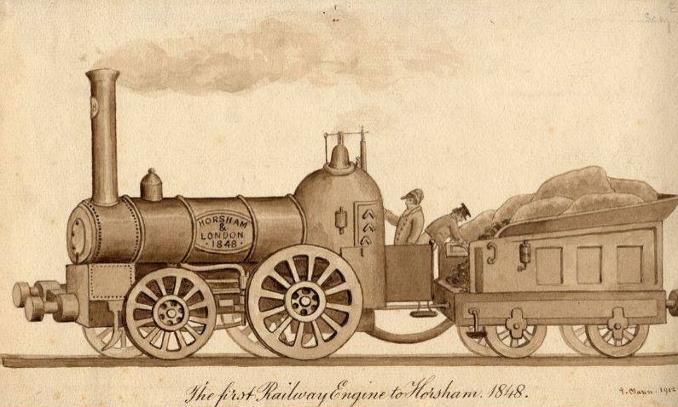

On the 14th February 1848 the line
from Three Bridges to Horsham opened.
Horsham Loco (Hors) 1848,
Horsham Locomotive shed was opened on 14th February 1848 by the London, Brighton &
South Coast Railway. The first shed was located at the North end of Horsham station on the
west side of the line and was a timber built three track straight dead-ended shed. The
facilities included a turntable sited across the access roads.
In 1896 a second shed was built to replace the existing shed. This being a much larger brick
built shed with ten stall open semi-roundhouse shed with a continuous pitched slate roof and
located to the North of Horsham station on the East side of the line. The new facilities
included a 46ft turntable, a coal stage and a water tank. In 1901 The shed was enlarged by
the addition of another eight stalls to the South East end. On the 18th July 1959 The shed
was closed but continued to be a Motive Power Depot used for stabling locomotives and the
facilities used as a servicing area until the end of steam in the Horsham area 14th June 1964. The locomotive shed finally demolished in 1969.

the Horsham - Three Bridges branch line in 1848.
The engine was designed by Thomas Mann and carried a nameplate on the boiler which read 'Horsham,' and London 1848'
Three Bridges Loco (3-B) 1848,
Three Bridges’s first locomotive shed was opened on 14th February 1848 by the London, Brighton & South Coast Railway, and was a wooden built shed of some sort, it is believed to have been brought into use when the line to Horsham and possibly expanded when the allocation was increase to cover the East Grinstead branch duties from 9th July 1855, engines were stationed from Horsham’s allocation. The station was called “Crawley” until the Horsham branch opened.
Three Bridges second Locomotive shed was opened in 1860 this shed was a brick building located with a slated pitched roof, and had two track straight dead-end shed, and was located
at the South end of Three Bridges Junction station on the West side of the line. The facilities
included a 45ft turntable, a coal stage and a water tank. Due to space limitations
these were sited further south in the fork of the Brighton and Horsham lines.
In 1909 The third shed was closed and demolished to enable station enlargement. A third
shed was temporary brick built one track shed was built alongside the water tank while the
new shed was being built.
In 1911 The forth new brick built three track straight through shed with a north light pattern
slate roof was opened and located to the south of Three Bridges station on the east side of
the Horsham line. The facilities included a 65ft turntable, a coal stage and a water tank.
In June 1964 the steam shed was closed and the steam depot becoming a Mixed Traction
depot and the shed used for storage of diesel locomotives and as a wagon repair shop. The
Mixed Traction depot and the shed closed on 30th November 1968.
HAYWARDS HEATH
John Packham (D.O.B. 1823 - D.O.D. 1864), entered the LB.S.C.R. service as a Porter at Haywards Heath, he then entered the footplate as engine cleaner, fireman and engine driver at Horsham & Three Bridges.
THREE BRIDGES LOCOMOTIVE SHED
The First Shed
A wooden shed of some sort is believed to have been brought into use when the line to Horsham was completed on 14th February 1848 and possibly expanded when the allocation was increase to cover the East Grinstead branch duties from 9th July 1855, engines were stationed from Horsham’s allocation. The station was called “Crawley” until the Horsham branch opened.